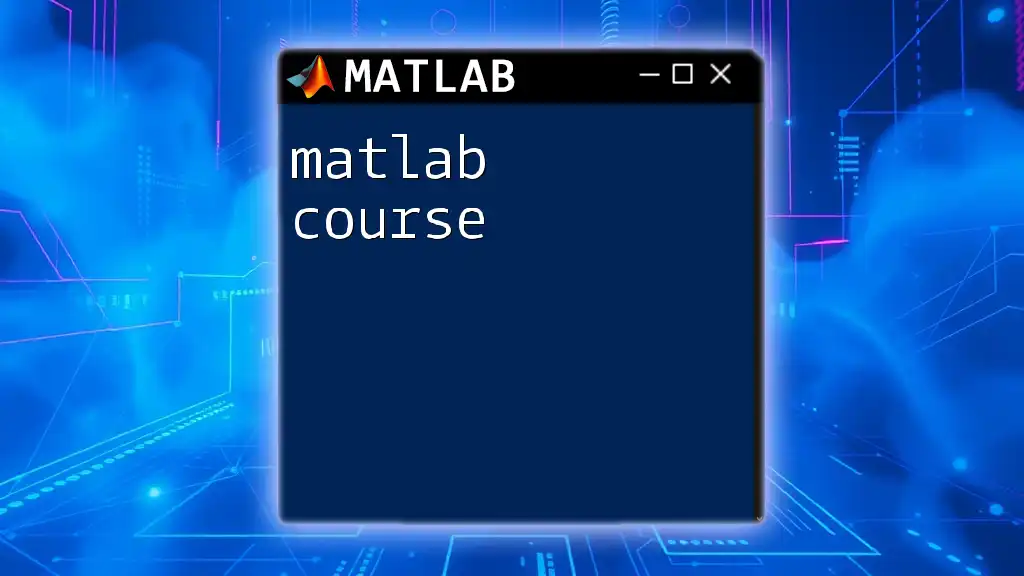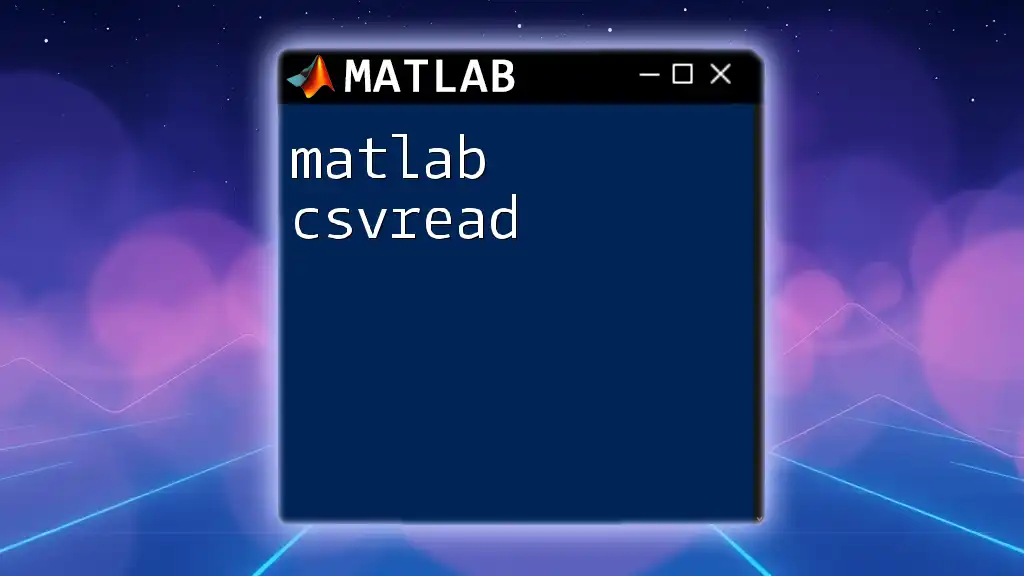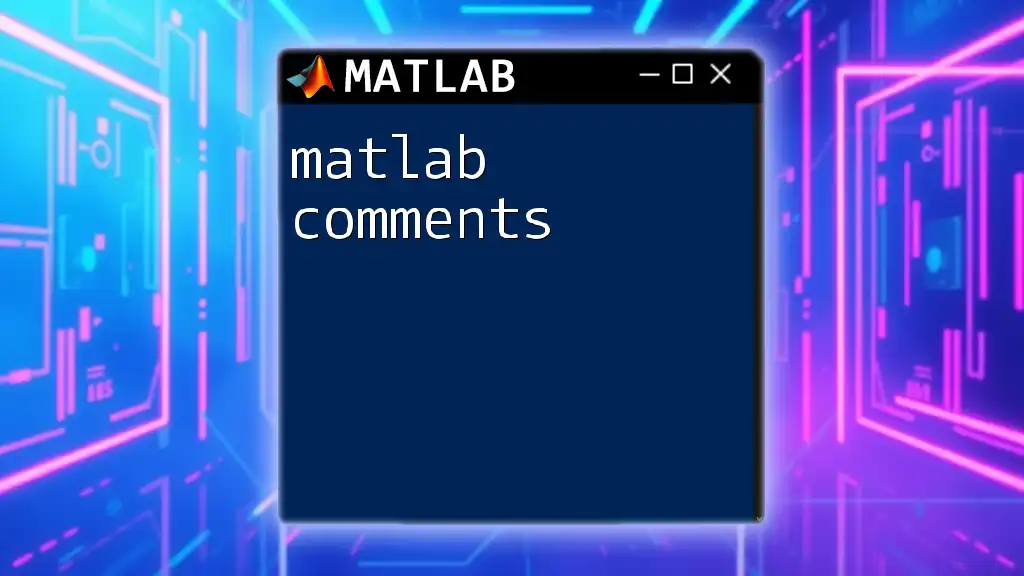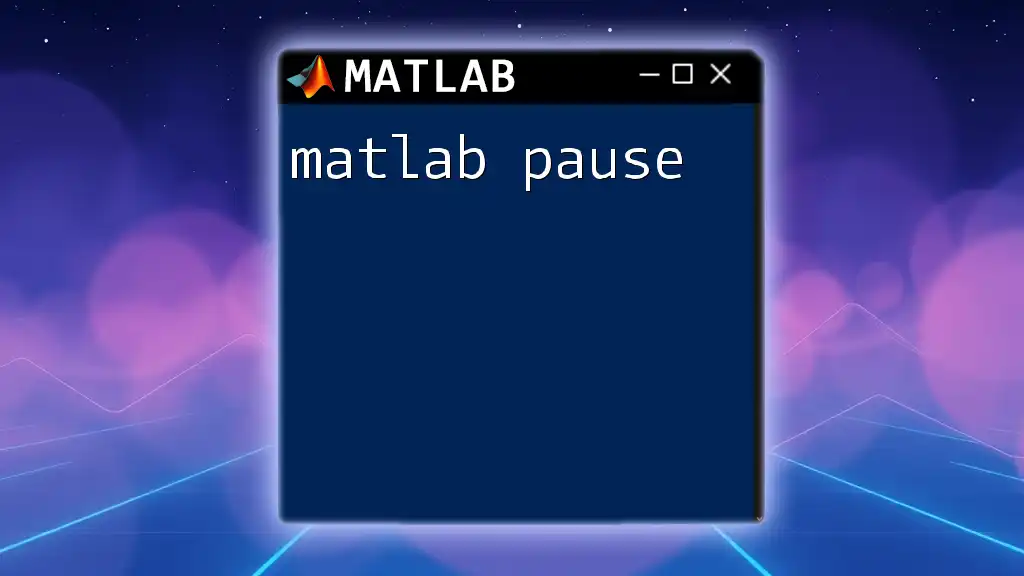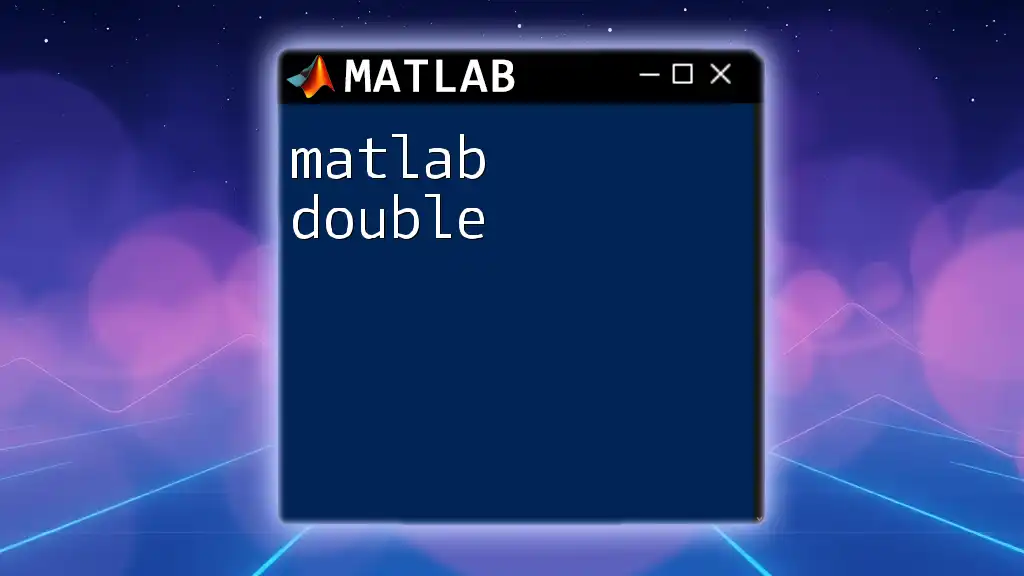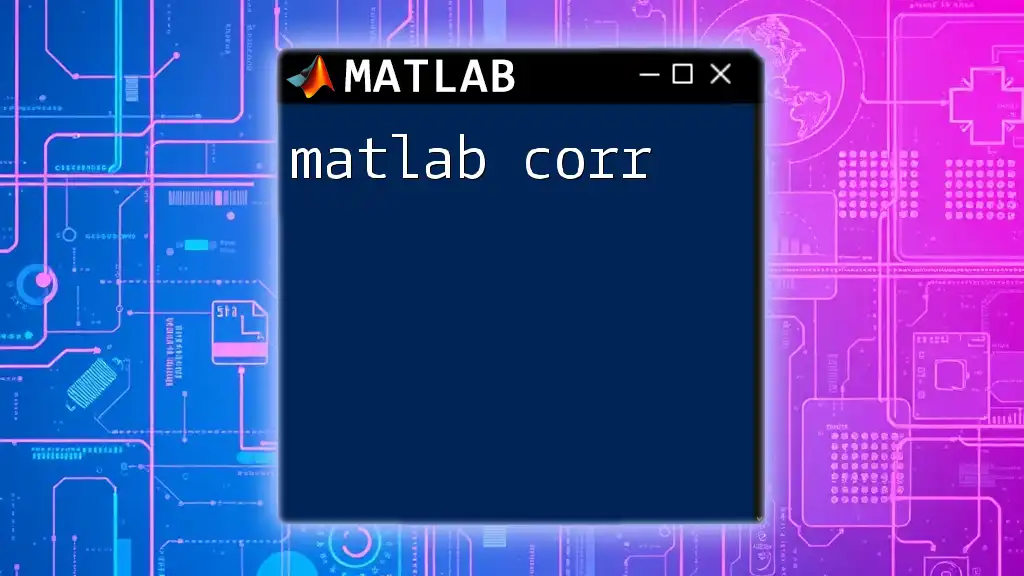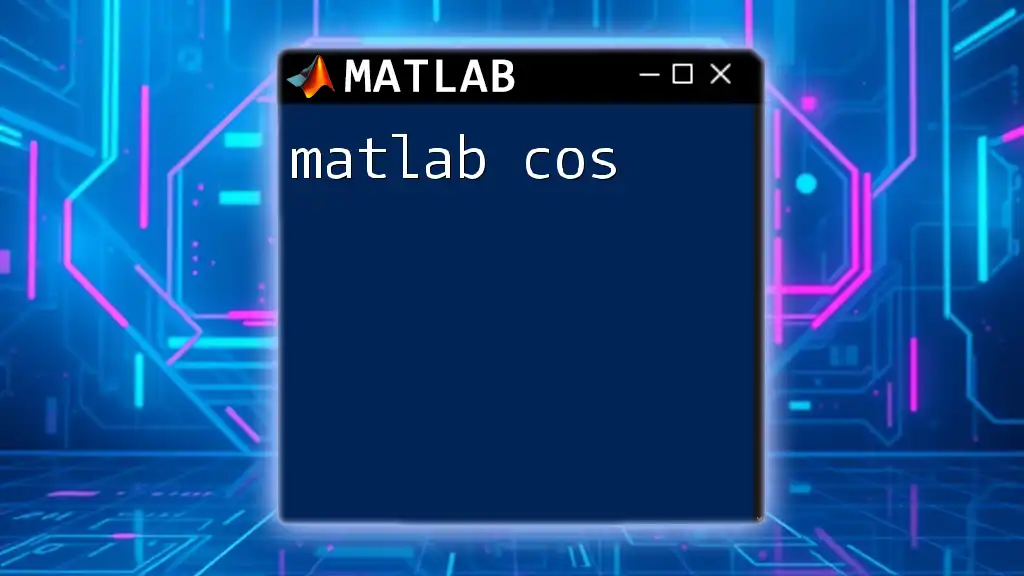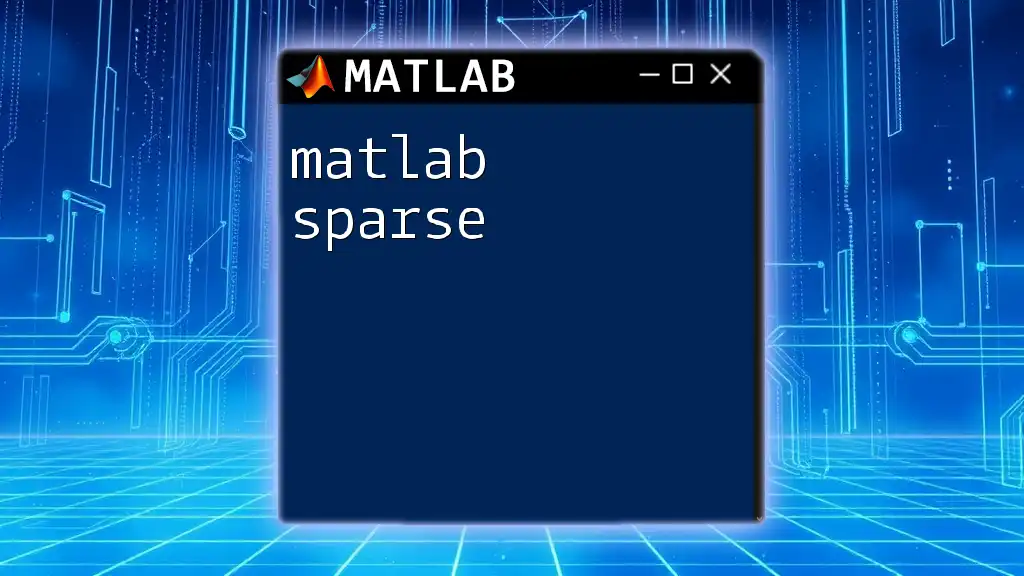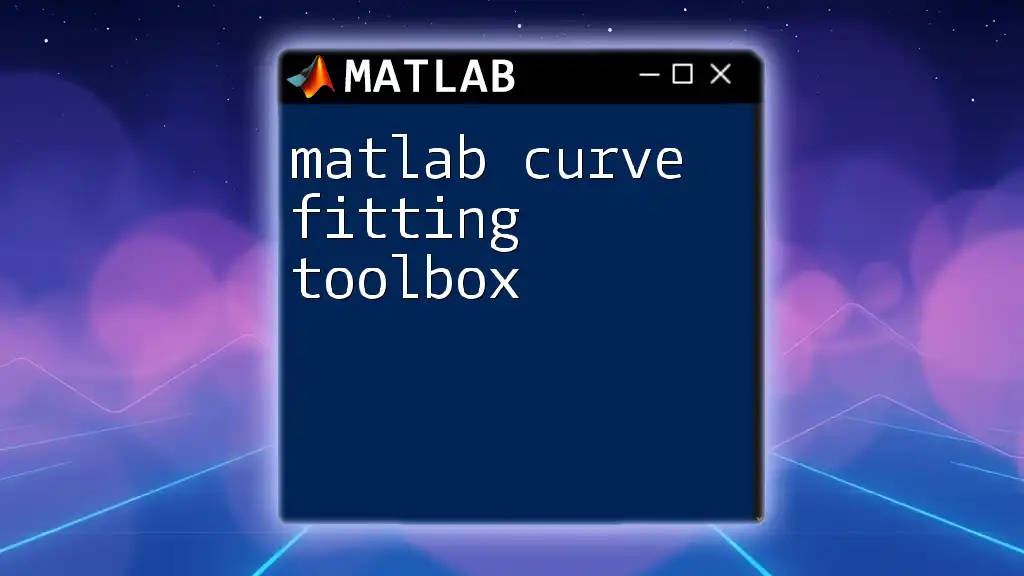Unlock your potential with our MATLAB course, designed to teach you essential commands quickly and efficiently, leveraging concise examples like the following to illustrate calculating the mean of an array:
% Calculate the mean of an array
data = [1, 2, 3, 4, 5];
mean_value = mean(data);
disp(mean_value);
Getting Started with MATLAB
Installation and Setup
To get started with a MATLAB course, the first step is to install the software. Visit the [MathWorks website](https://www.mathworks.com/) to download the latest version of MATLAB. Here’s a brief guide on the installation process:
- Create an Account: Register or log in to your MathWorks account.
- Download MATLAB: Select the version that suits your needs, whether it be the latest release or a student version.
- Install and Activate: Follow the installation prompts and input your license details when required.
Once installed, familiarize yourself with MATLAB's interface, which includes the Command Window, Workspace, and Editor. This basic understanding will facilitate your learning journey throughout the MATLAB course.
Basic MATLAB Operations
In MATLAB, operations are carried out using various data types, including scalars, vectors, and matrices. The simplest operations consist of basic arithmetic, such as addition, subtraction, multiplication, and division. The syntax is intuitive, making it user-friendly for beginners.
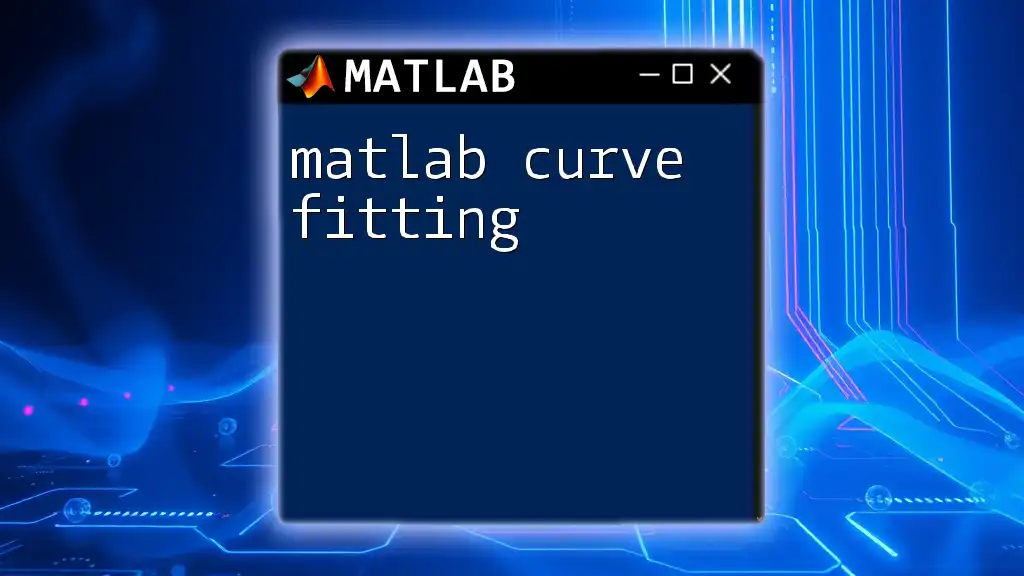
MATLAB Fundamentals
MATLAB Syntax and Command Structure
Understanding the command structure is crucial. MATLAB commands are generally straightforward and follow a simple syntax. You can execute commands directly in the Command Window, which is great for quick calculations or testing code snippets. For lectures or projects, script files are used to write a series of commands that can be executed together.
Variables and Data Types
Creating and assigning variables in MATLAB is simple. You declare a variable just by assigning a value to it, like so:
x = 10;
MATLAB supports various data types such as arrays, structures, and cells. Understanding these types is vital, as they will be frequently used throughout the course. For instance, matrices are a fundamental data structure in MATLAB.
To create a matrix, you could use this simple command:
A = [1, 2, 3; 4, 5, 6; 7, 8, 9];
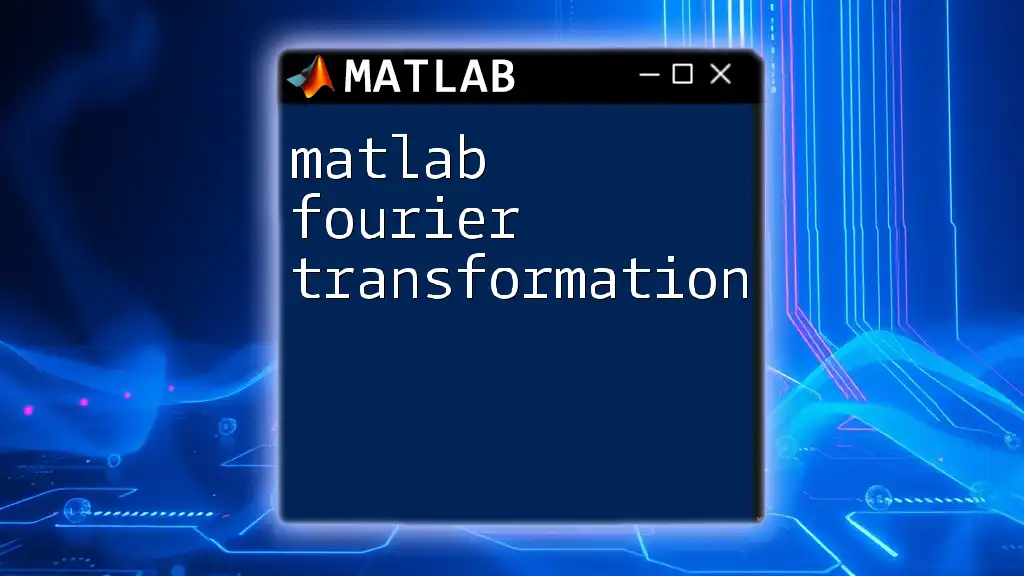
Essential MATLAB Commands
Basic Commands for Beginners
Familiarizing yourself with basic commands can greatly enhance your productivity. The commands `clc`, `clear`, and `close all` are essential for managing the MATLAB environment:
- `clc`: Clears the Command Window.
- `clear`: Removes variables from the workspace.
- `close all`: Closes all figure windows.
These commands are often used at the beginning of a script to ensure you start with a clean slate.
Working with Arrays and Matrices
Understanding how to manipulate arrays and matrices is a key component of a MATLAB course. You can index and slice arrays using simple syntax:
B = A(1, :); % This selects the first row of matrix A
Common functions used to handle arrays include `size()`, `length()`, and `reshape()`. For example, to reshape a vector into a matrix, use the following command:
v = [1, 2, 3, 4, 5, 6];
M = reshape(v, [2, 3]); % Converts v into a 2x3 matrix
Mathematical Operations
MATLAB’s efficiency shines through in its handling of mathematical operations. You can perform basic operations such as addition, subtraction, multiplication, and division directly on arrays and matrices:
C = A + B; % Where B is a compatible matrix with A
For element-wise operations, which are crucial in many applications, use the dot operator. For instance, to perform element-wise squaring of a matrix:
D = A.^2;
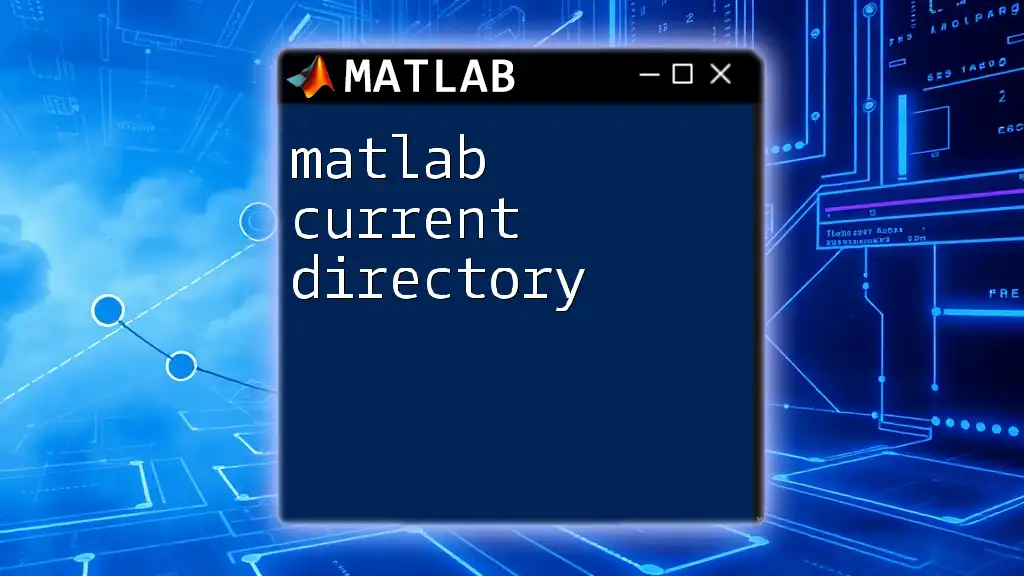
Control Flow and Functions
Conditional Statements
MATLAB allows you to control the flow of your code using conditional statements like `if`, `else`, and `elseif`. This is particularly useful for decision-making within your code. Here’s an example that implements a simple grading system based on a score:
score = 85;
if score >= 90
grade = 'A';
elseif score >= 80
grade = 'B';
else
grade = 'C';
end
Loops and Iteration
Loops help you to execute blocks of code multiple times. MATLAB supports both `for` and `while` loops. Utilizing loops effectively can streamline your programming work and save time.
Creating Functions
Functions are critical for code reusability. You define functions in MATLAB using the `function` keyword. Here’s a simple example defining a function to calculate the factorial of a number:
function f = factorial(n)
f = 1;
for i = 1:n
f = f * i;
end
end
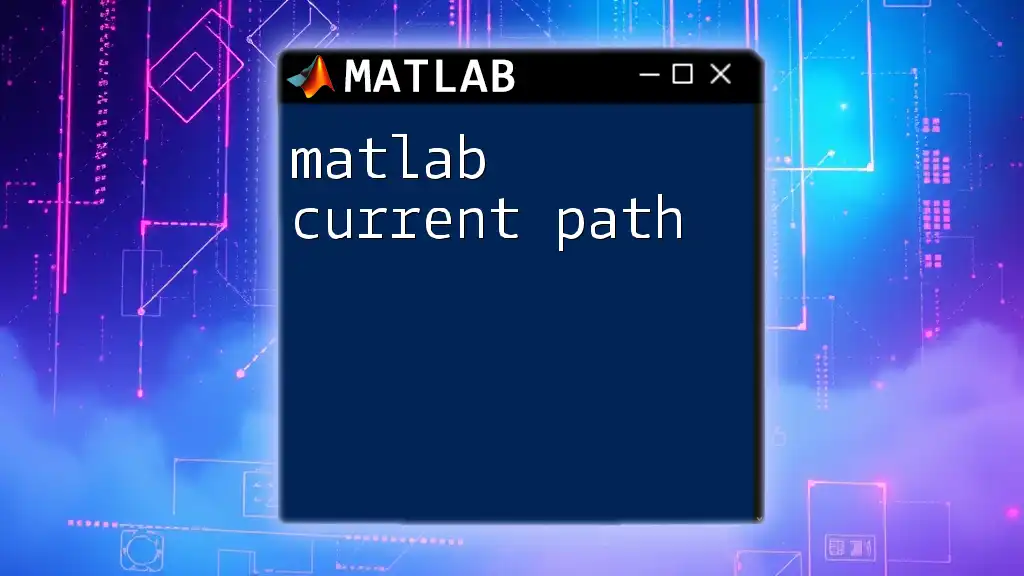
Data Visualization in MATLAB
Plotting Basics
Data visualization is an essential aspect of MATLAB. You can create various types of plots such as 2D and 3D graphs. Common plotting functions include `plot()`, `scatter()`, and `surf()`. Visualizing data clearly helps in analyzing results effectively.
Customizing Plots
You can customize your plots by adding titles, axis labels, and legends. For instance, to create a simple sine wave plot:
x = 0:0.1:10;
y = sin(x);
plot(x, y);
title('Sine Wave');
xlabel('X-axis');
ylabel('Y-axis');
grid on;
Advanced Visualization Techniques
For more complex data representations, utilize subplots to display multiple graphs in one figure. This method allows for a more concise comparison of different datasets.
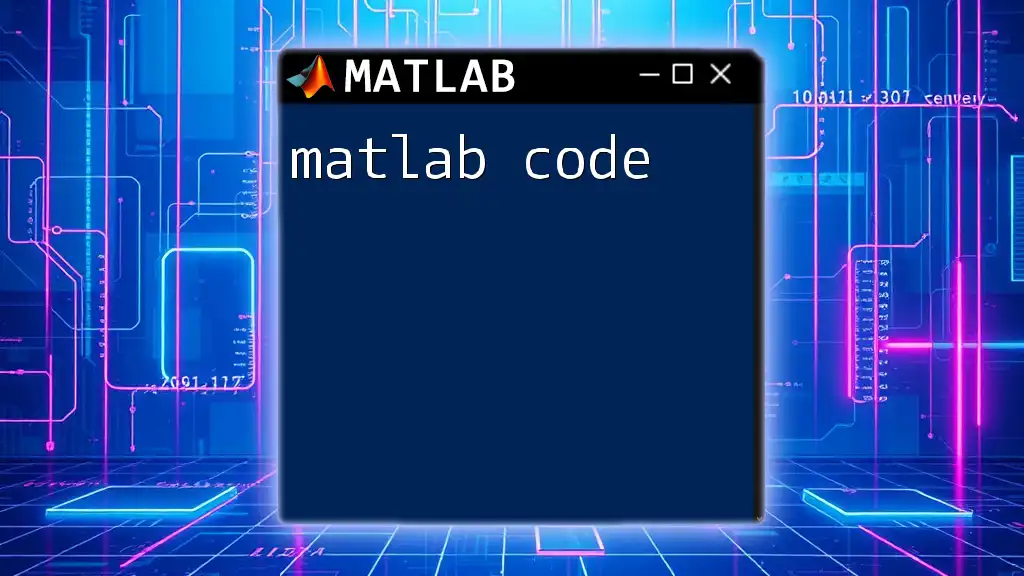
Advanced MATLAB Features
Working with Toolboxes
MATLAB comes with a variety of specialized toolboxes that enhance its capabilities for various applications like Image Processing and Signal Processing. Familiarizing yourself with these can significantly broaden your skill set. Ensure that you install the necessary toolboxes according to your course requirements.
Simulink Basics
Simulink is an environment for multi-domain simulation and model-based design. A basic understanding of Simulink can enrich your experience in MATLAB. It allows you to create block diagrams easily and simulate dynamic systems.

Tips and Best Practices
Writing Efficient MATLAB Code
Efficiency is key. Utilize vectorization instead of loops wherever possible, as this can lead to significant performance improvements. Focusing on writing clean, efficient code early in your learning journey will pay off in the long run.
Debugging Techniques
Debugging is a vital skill in programming. MATLAB provides several tools to help you troubleshoot your code. Familiarize yourself with breakpoints, the debugger, and error messages. Following best practices for troubleshooting can save you significant time and frustration.
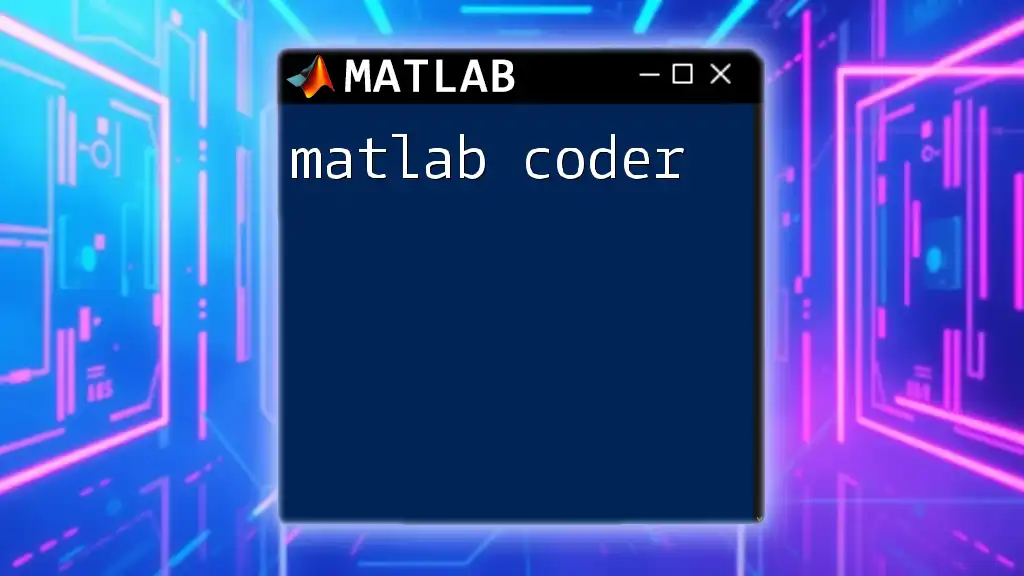
Conclusion
In this comprehensive guide to a MATLAB course, you have been introduced to the essentials needed to start using MATLAB efficiently. By understanding the basic operations, syntax, and more advanced features, you are well-equipped to dive deeper into the world of MATLAB programming. With this foundation, explore further resources, engage with the community, and embark on mastering MATLAB commands!

